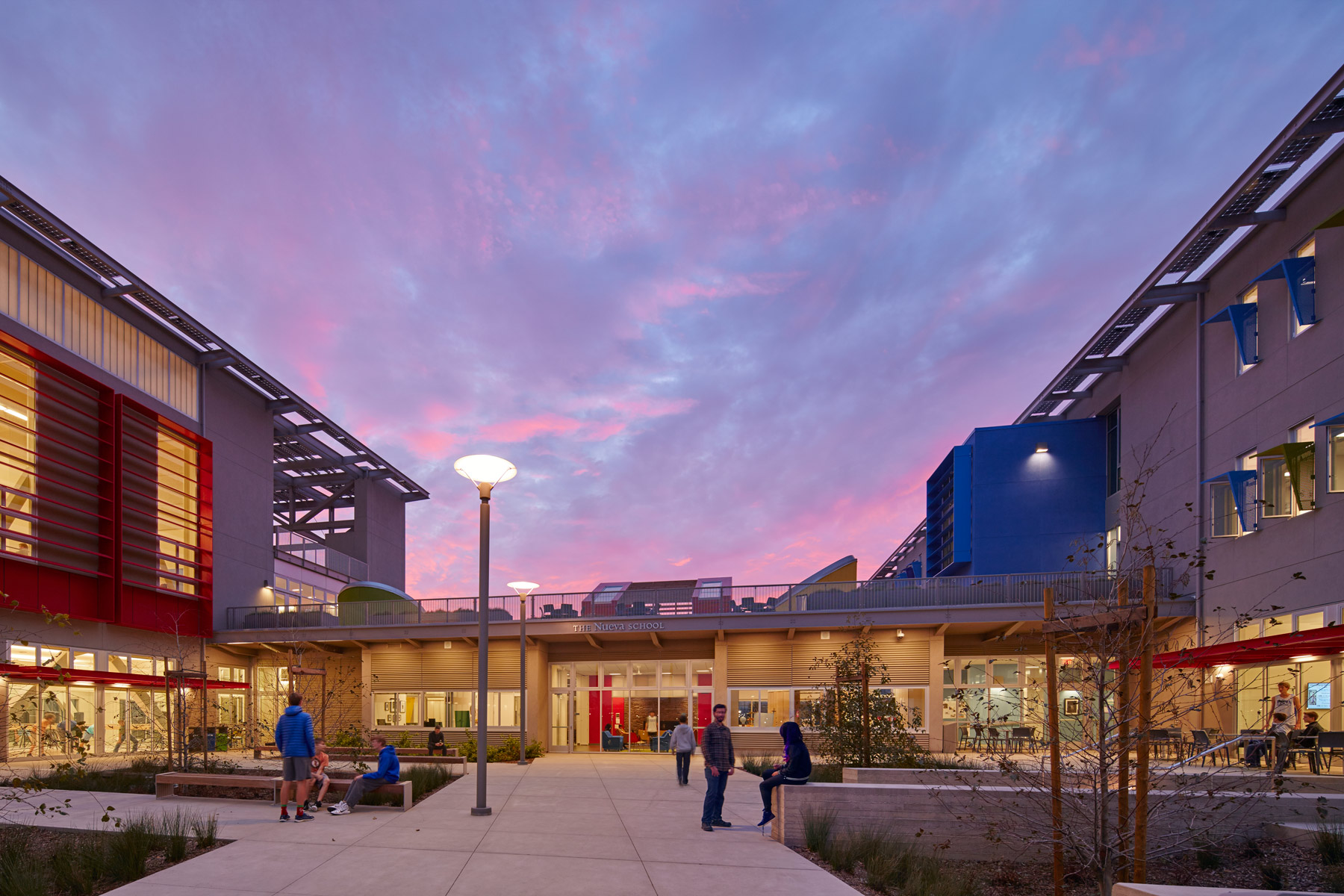
The Nueva School is at the forefront of the movement to incorporate interdisciplinary inquiry, design thinking, and social / emotional learning throughout their curriculum and, by extension, throughout their learning environments. How can the design of today’s schools fully support the rapidly evolving technologies and curricula that accompany these important educational advances, providing flexible spaces that will continue to inspire 21st century students?
Story By
Bill Leddy
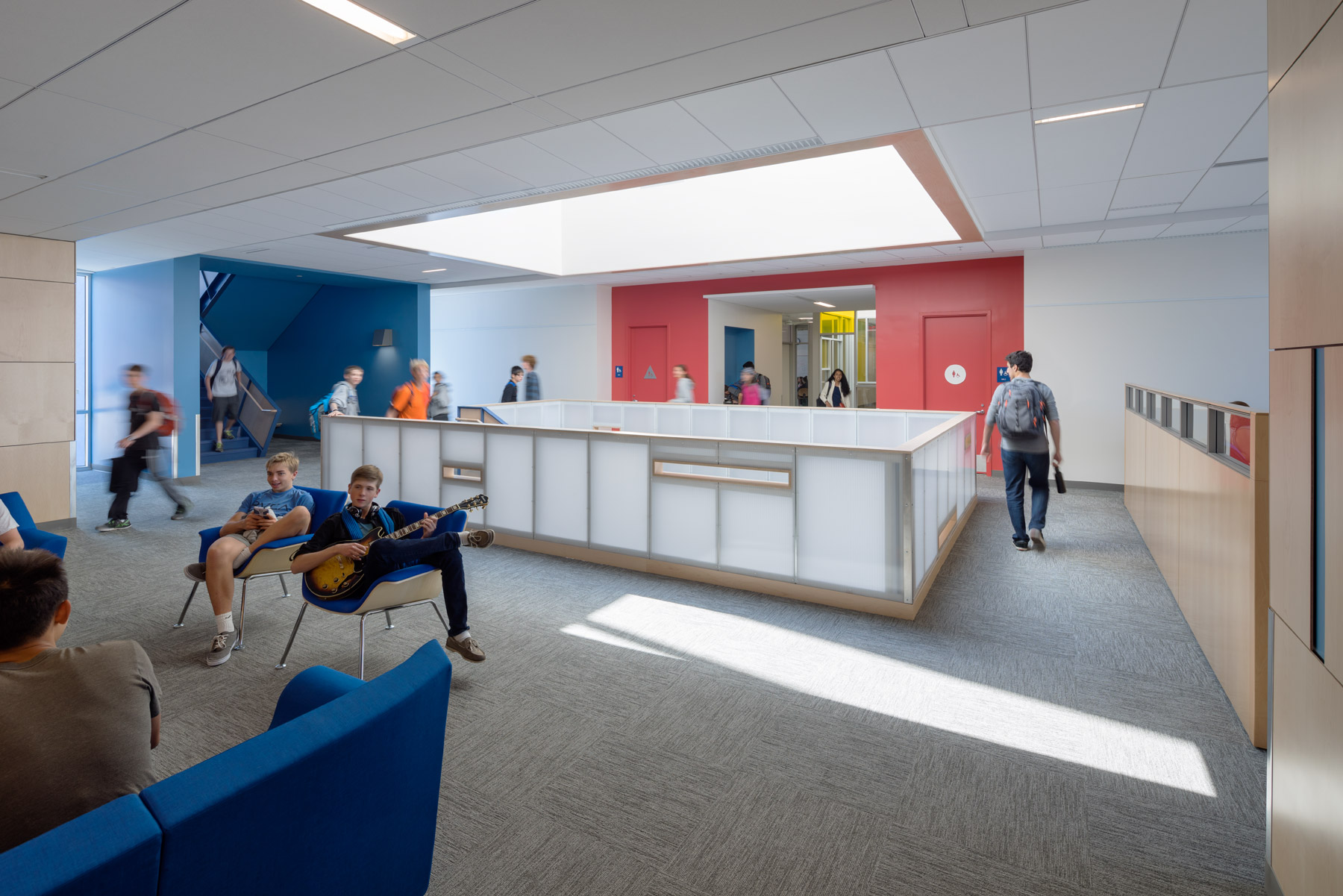
The physical environment of schools today isn’t just a passive stage – it’s anything but! Gone are the long corridors lined with lockers and stuffy, enclosed classrooms; the isolated faculty lounges; the remote science rooms. School today is a vibrant place of exchange, where the social and educational worlds are merging - a dynamic landscape where the learning space has radically decentralized, breaking down the “silos of learning” to encourage creative, interdisciplinary inquiry.
Mind / body wellness and Social / Emotional Learning (SEL) are essential elements of this educational landscape, critical to educating the whole person. Nutrition, fitness, and healthy social engagement are central to the daily lives of thriving young people. As a result, spaces supporting these values, such as student dining, dance and exercise rooms, and a variety of social gathering places, are prominently located at the core of campus life.
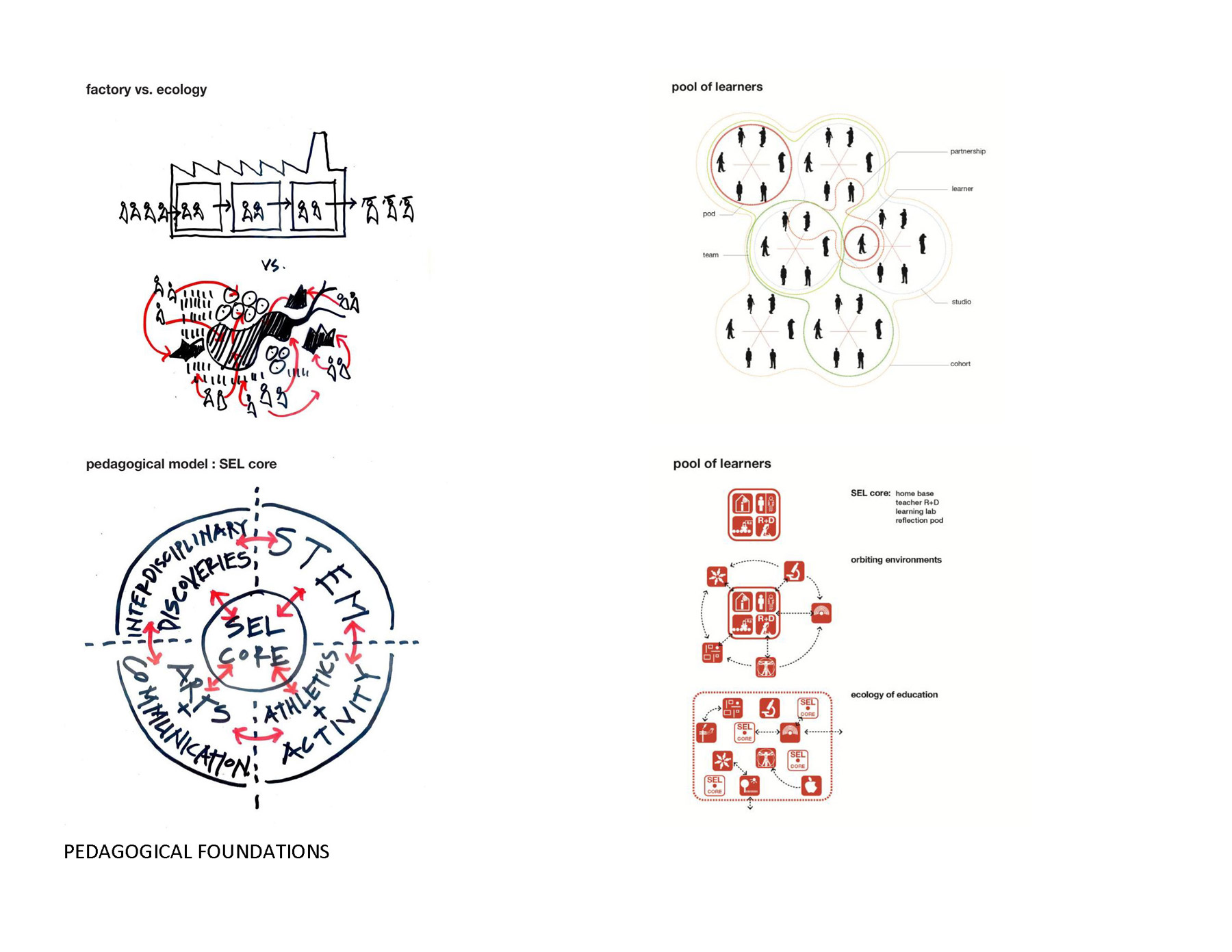
The mobile devices of digitally native teens encourage research, discussion, and collaboration to happen anywhere, in groups of all sizes, inside the walls of the school as well as outside. The interdisciplinary blending of arts and sciences, research and critical thinking that is inherent in the Innovation Lab means that classroom spaces no longer need to be divided along strict subject lines. Instead, open and flexible learning environments are far better at meeting rapidly evolving educational needs. Like a lively, natural habitat, school has evolved into an “ecology of learning” that expands into the surrounding community - connected to the world, embracing adaptation, and nurturing creative collaboration.
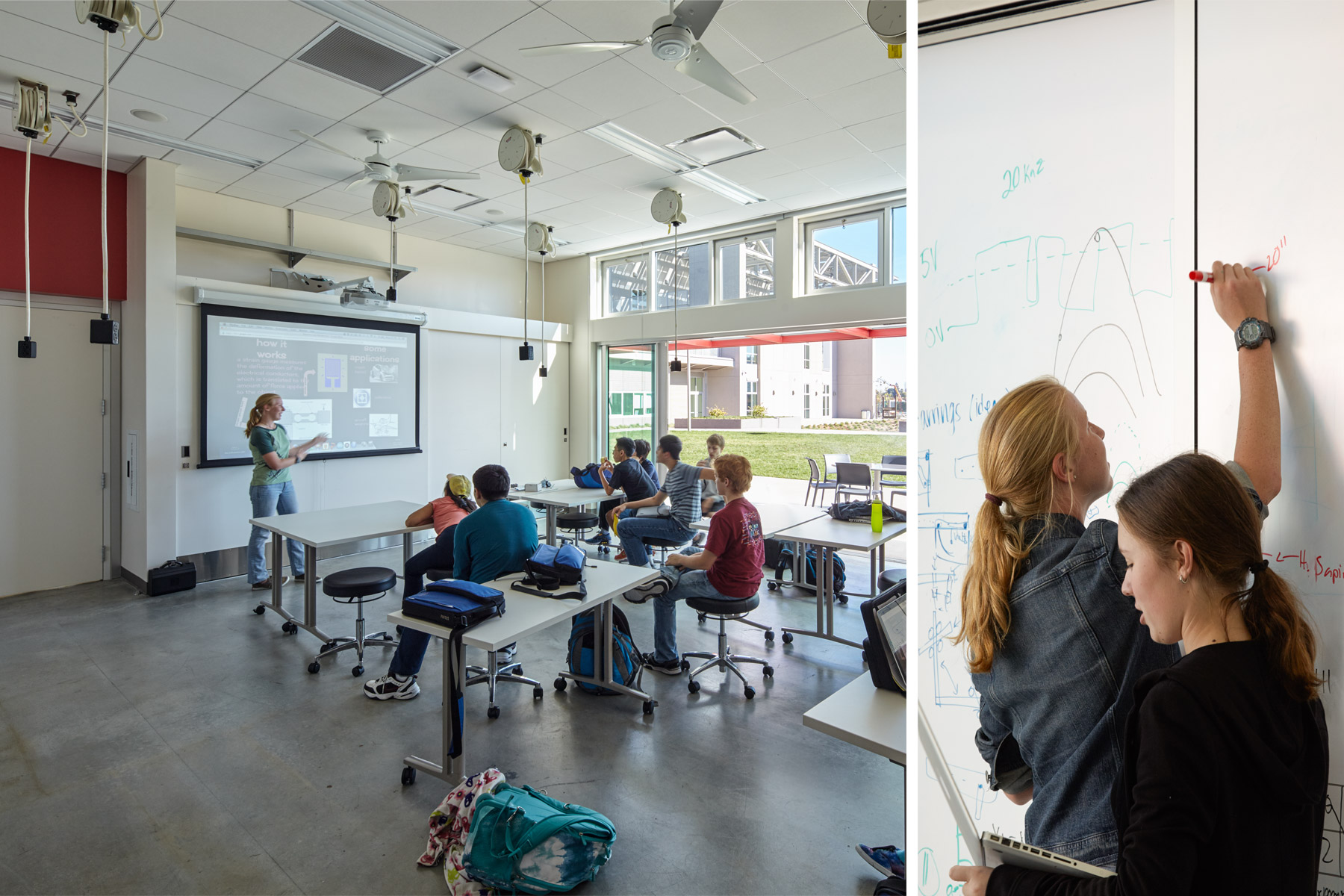
Preparing global learners and leaders of the future requires the development of strong anchors to “place” - a sense of belonging to, and responsibility for, our ever-changing world. Schools can provide this in a number of ways, including:
Connecting to climate: By engaging climate, schools connect students to the daily rhythms of the sun and the changing seasons unique to their place. Naturally ventilated buildings open to the cooling breezes; colorful sunshade elements protect the interiors from heat while they trace the movement of the sun on the walls; large sliding glass doors expand classrooms to the outdoors; rainwater runnels celebrate the rainy season while they reveal stormwater management strategies.
Organic gardens: It is well-documented that gardens where student can grow their own healthy food teach multiple lessons about nutrition, husbanding the earth’s resources, and the primal cycles of the seasons. A “Kitchen Lab” in the Dining Hall can give students the opportunity to transform their harvest into community-building meals for students and faculty.
Learning landscapes: In our increasingly urban and homogenized world, it is more important than ever to learn about the indigenous species unique to our communities. Interpretive landscapes can model diverse native ecologies for students, providing abundant opportunities for observation, appreciation and research.
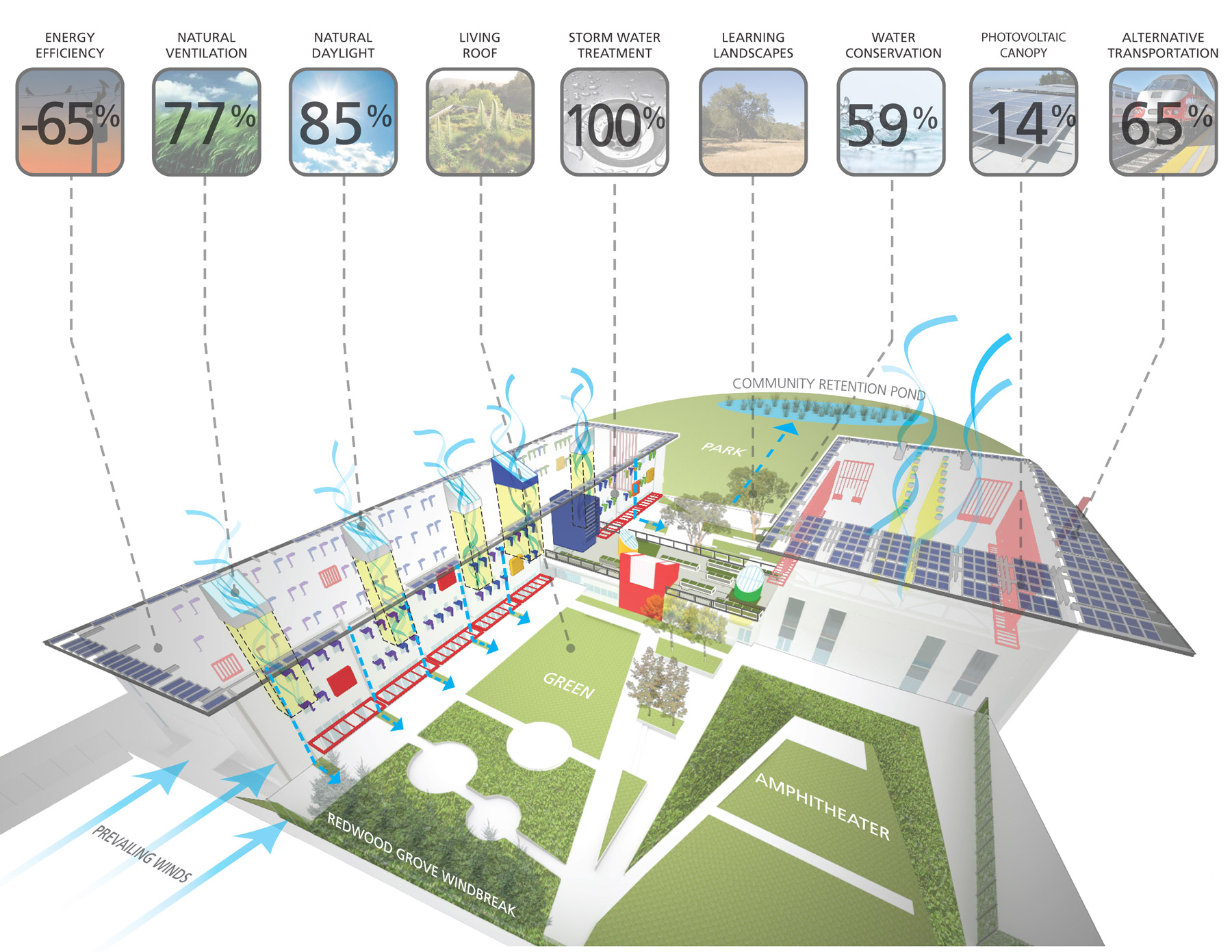
Inquisitive teenagers have a thirst for knowledge about the increasingly important links between our built world and the natural world that sustains us all. As the impacts of climate change increase, students will have an even more intense interest in engaging this issue through localized experience and research. In response, the entire campus is conceived as a “living lab” that models advanced, carbon-neutral living and learning. Automobile use is discouraged; energy and water consumption are radically reduced; the sun and the wind generate power and provide comfort year-round. Students are invited to engage in research into building science, energy efficiency, renewable energy, urban farming, and a host of other areas that equip them to face the challenges of a changing world.
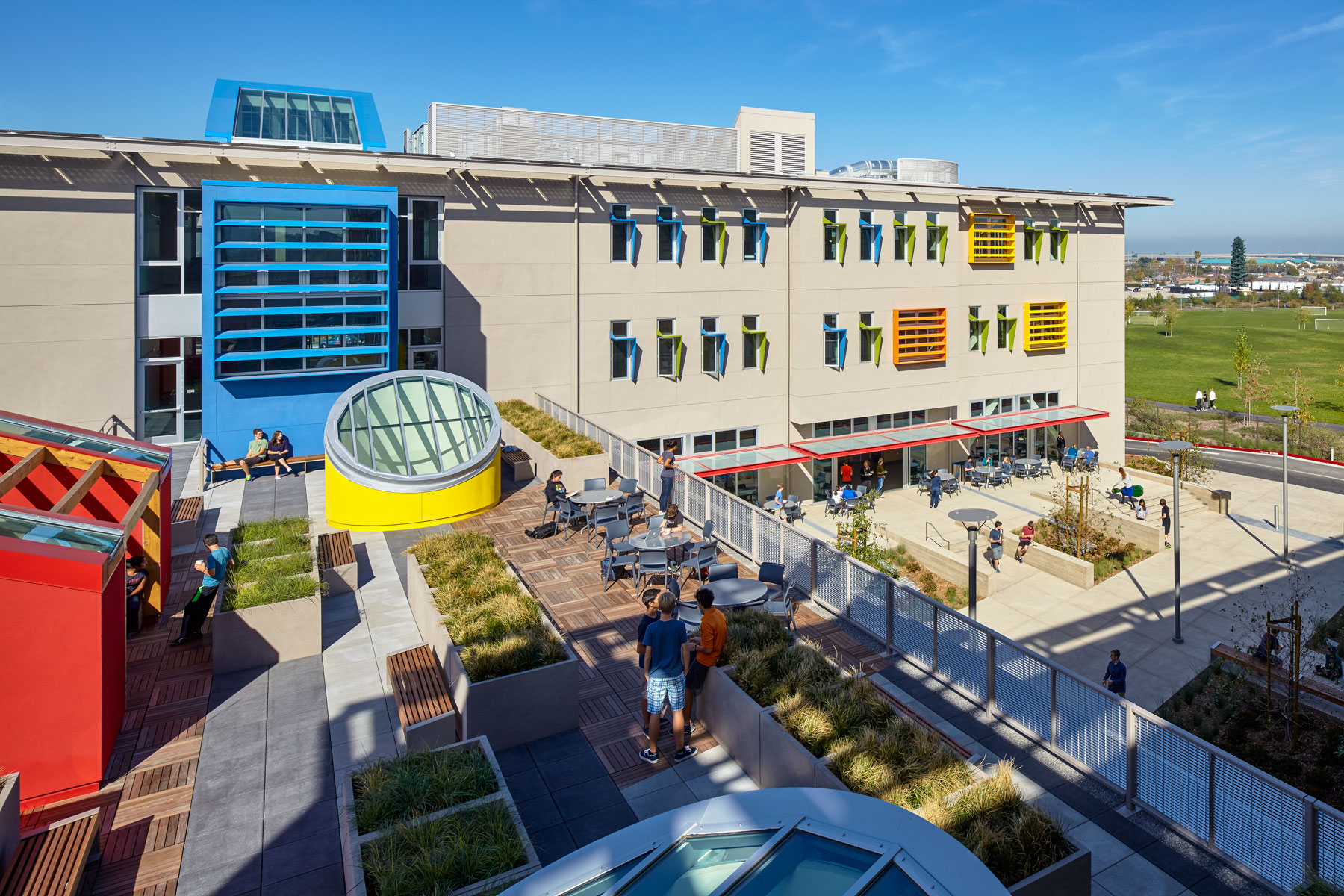
We believe that good design is born not only from aesthetic imperatives, but from an intensive engagement of ideas, drawing from other fields, listening to and interpreting a client’s needs in built form. By immersing ourselves in the Nueva School’s specific character - one attuned to an interdisciplinary, learner-centered curriculum; committed to community engagement, technology, and environmental sustainability; and focused on social-emotional development at its core - we have come to understand broader principles about school design in the 21st century. We continue to learn and apply this knowledge in all our work.